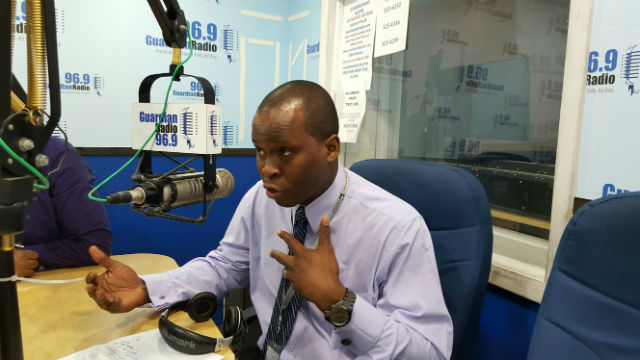|
From:TheBahamasWeekly.com New Providence
Crystal clear water resembling the most pristine swimming pools you can imagine. Fresh air that carries the scent of the sea and the sounds of swooping sea gulls. It’s better in the Bahamas. Unless the dump is on fire, of course. The New Providence landfill has been ablaze twice this week, pumping out air so noxious that no amount of fresh sea air could ever mask it. Not exactly the stuff fairy tale, Chamber-of-Commerce-type vacations are made of. Moreover, it may be years before we fully understand the consequences of being exposed to the potentially poisonous clouds of billowing gray smoke. So say two experts – an ecologist and a physician -- who spared no words on the Lester R. Cox radio show, Connected, on Guardian Talk Radio today, sharing concern about short and long-term impact of breathing polluted air. “First of all, we don’t know what’s burning,” said Dr. Arlington Lightbourne, owner of the Nassau-based Wellness Clinic. “We have no idea what the immediate effect is.” What Dr. Lightbourne does know, however, is that breathing toxic fumes is directly correlated with higher rates of chronic respiratory ailments ranging from asthma and bronchitis to headaches and sinus issues. “The average-sized person takes 24,000 to 28,000 breaths a day,” Lightbourne said. “We breathe the weight of a 10-year-old child in a 24-hour period.” As for 10-year-old children themselves, they take in even more air because their oxygen needs are much greater than that of an adult, and their symptoms might take years to manifest. “Lot of effects take 20 years to develop,” Lightbourne said. “You can be 10 today and then at 30 be diagnosed with cancer. How do you make the connection between the diagnosis with what’s happening at the dump now? Think about those people who live near the dump.” Some Bahamians believe the best solution is to relocate the dump to an area where people aren’t living in such close proximity to burning trash. Romauld Ferreira, environmental attorney and director with Save the Bays, however, disagrees. “The dump is perfectly located in the center of the island,” Ferreira said. “The problem is that subdivisions were allowed to be built next to the dump. If you have a dump and the government approves it [subdivision] to be built, then you will have this conflict.” Why is it, then, that the people themselves aren’t forming some sort of group to file action against the government in this case? As always, the answer boils down to economics. “You’re dealing with everyday people who don’t have money for (law) suits,” Ferreira. “It takes years to establish personal injury for a class action lawsuit and a lot of testing.” Rather than moving the dump, Ferreira’s said reengineering is the ultimate long-term solution. “Combustion is going on so there’s a production of methane and there’s no segregation of waste so once you get a spark, you’re burning methane,” Ferreira said. “Methane can be vented to stop fires or can be used as energy. The city dump is not engineered for that. The built environment is not there, hence we have these fires from time to time.” But, with an estimated price tag landing in the range from $60 million to $80 million, reengineering isn’t likely to happen any time soon, which is why for Lightbourne’s part, he believes matters should be taken out of the government’s hands altogether. “We need to be willing to speak up, to take an active role in our health and things that effect our health,” Lightbourne said. “[Poor] Air quality and water quality are having very negative consequences. As physicians we need to take a leading role and not allow the government to take control.”
|
